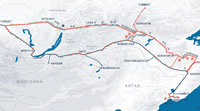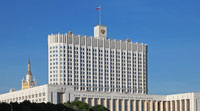Corporate governance system
Russian Railways is carrying out a phased organisational reform to meet its objective of building a corporate governance system for the Russian Railways Group.
Russian Railways is committed to transitioning from the operational management of subsidiaries and affiliates to strategic management and introducing the best corporate practices.
The corporate governance system in place at the Russian Railways Group allows for:
- implementing the policy of Russian Railways, including the dividend policy, with respect to subsidiaries,
- establishing the management and supervisory bodies of subsidiaries,
- monitoring the business planning process and financial and economic activities of S&A,
- interacting with shareholders and investors while observing the rights of minority shareholders, including when arranging transactions associated with the purchase and sale of stakes in S&A,
- balancing the goals of the Russian Railways Group and the strategic activities of the Group’s companies.
As part of the corporate governance system established at the Russian Railways Group, the corporate governance system employs the following best practices:
- Involving independent directors in the work of the Russian Railways Board of Directors and the boards of directors of subsidiaries. The Russian Railways Board of Directors includes five independent directors. Based on the annual general meetings of shareholders held in 2014, independent directors were involved in the work of the boards of directors of the 20 largest subsidiaries;
- The committees under the boards of directors consider agenda items on a tentative basis. Three committees operate under the Russian Railways Board of Directors: the Audit and Risk Committee, the Personnel and Remuneration Committee and the Strategic Planning Committee. Committees under the boards of directors functioned at 33 major companies that are part of the Russian Railways Group;
- Russian Railways has a collective executive body — the Management Board. Management boards have also been established at several of the Company’s biggest subsidiaries;
- A treasury control system has been established for the Group’s largest subsidiaries. In 2015, the treasury system is to be extended to all subsidiaries of Russian Railways.
The decades-long management system at Russian Railways, which was inherited from the Russian Ministry of Railways, could be described as a multi-tiered regionally operated system that involved the management of major regional railway business units and production enterprises.
Since its establishment, Russian Railways has transformed into a vertically integrated structure comprised of business units that specialise in specific types of activities.
The business units created as part of reforms at Russian Railways have become centres of responsibility for the results of their core business activities.
They have been granted broad powers in decision-making on matters concerning operational activities.
The new management structure has effectively proven its ability to function in market and unfavourable macroeconomic conditions as well as improve its competitiveness and appeal to customers.










